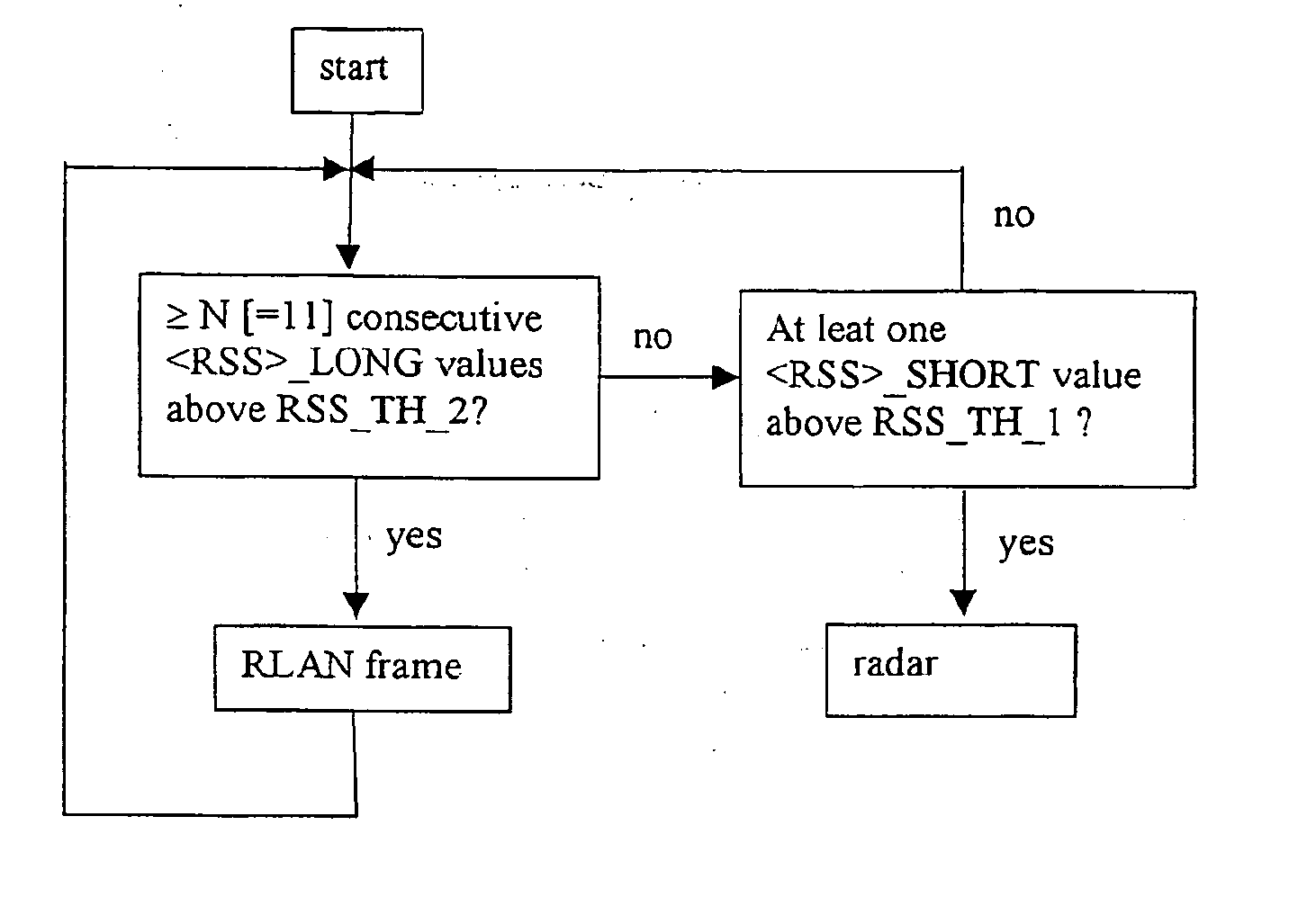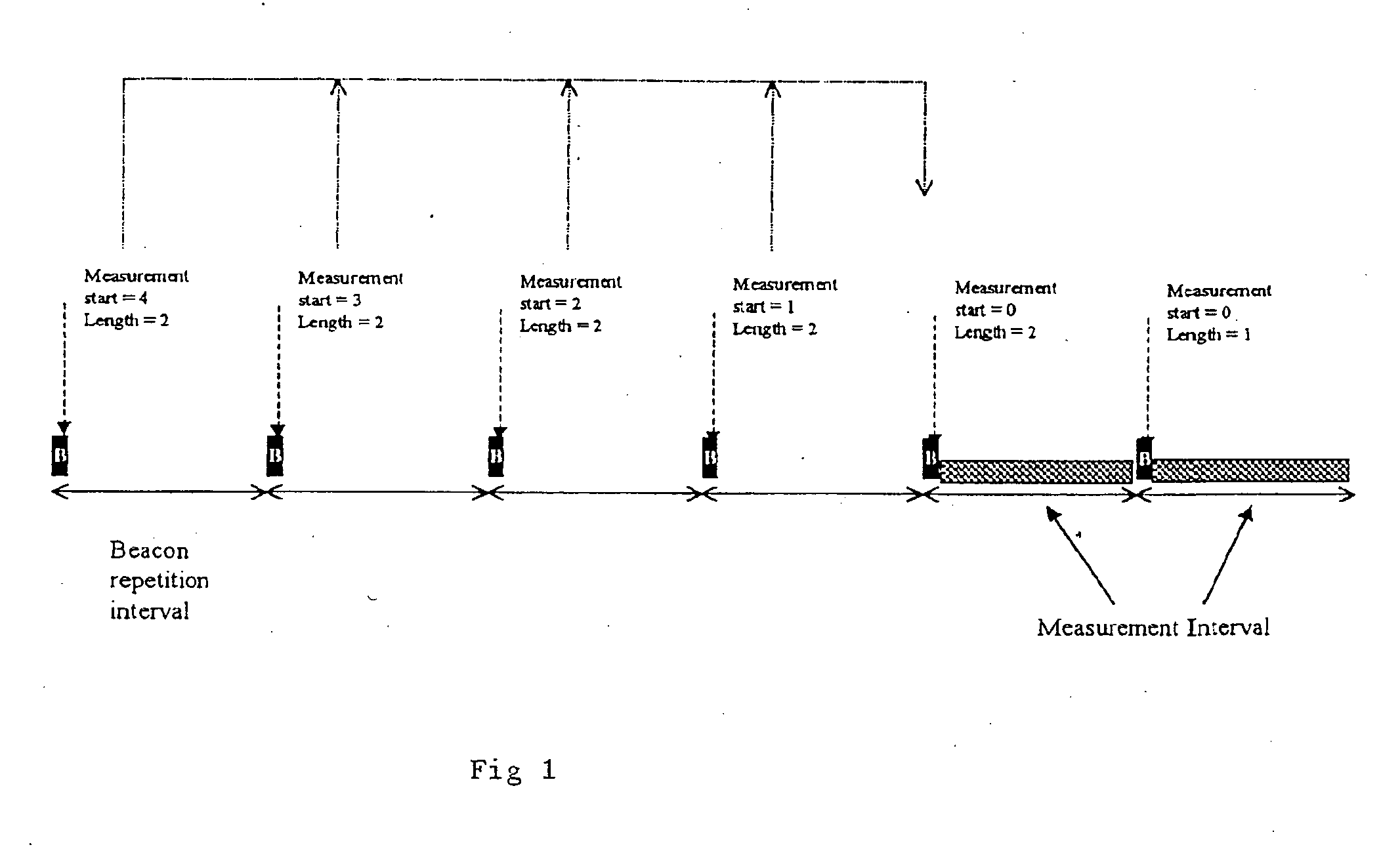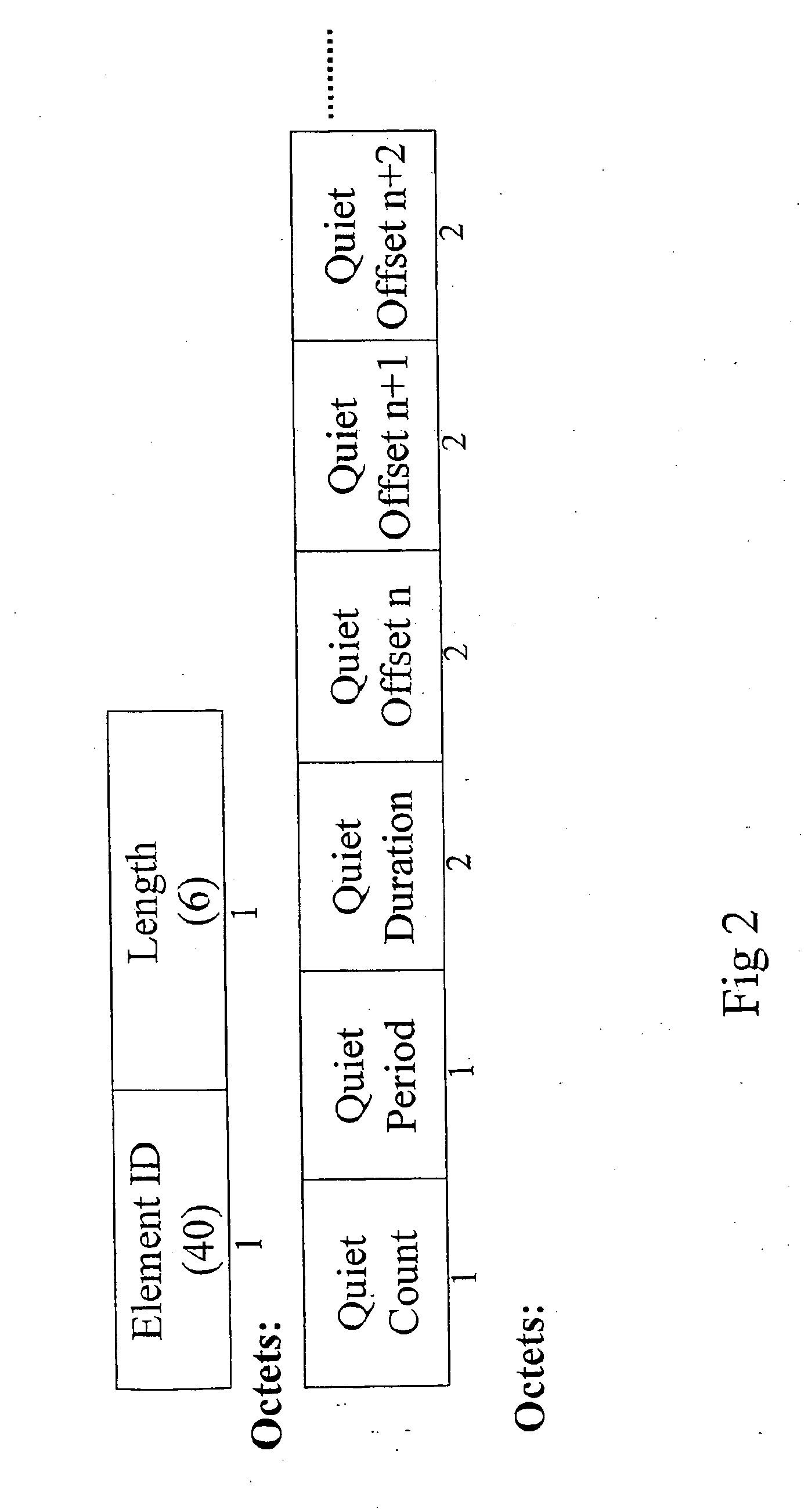Wireless communications system with detection of foreign radiation sources
a technology of foreign radiation source and wireless communication system, which is applied in the field of wireless communication system with detection of foreign radiation source, can solve the problem of few attempts
- Summary
- Abstract
- Description
- Claims
- Application Information
AI Technical Summary
Benefits of technology
Problems solved by technology
Method used
Image
Examples
Embodiment Construction
The principles of the present invention will be described below, using a wireless communications system of the radio local area network (RLAN) kind according to the so called IEEE802.11 standard. In order to illustrate the problems which are addressed by the invention, the version of this standard known as IEEE802.11a will be used, since this standard is specified for the 5 GHz band, a band which is also used by so called C-band radars.
Since the same frequency band is used both by the RLAN-system in question and certain radar systems, there is thus a need to coordinate the use of the frequency band in question. Such coordination and rules for coexistence on the same frequency band is presumably agreed upon in advance, and decided either by regulatory bodies, or by the industry itself. Regardless of which coordination functions or rules that are agreed upon, there will be a need for the RLAN system to be able to detect the presence of radars in or close to the coverage area of the...
PUM
 Login to View More
Login to View More Abstract
Description
Claims
Application Information
 Login to View More
Login to View More - R&D
- Intellectual Property
- Life Sciences
- Materials
- Tech Scout
- Unparalleled Data Quality
- Higher Quality Content
- 60% Fewer Hallucinations
Browse by: Latest US Patents, China's latest patents, Technical Efficacy Thesaurus, Application Domain, Technology Topic, Popular Technical Reports.
© 2025 PatSnap. All rights reserved.Legal|Privacy policy|Modern Slavery Act Transparency Statement|Sitemap|About US| Contact US: help@patsnap.com



